While few Hasidic Jews remained in Hungary after the Holocaust, Hungarian culture lives on in surprising ways among more than a hundred thousand ultra-orthodox Jews in Brooklyn.
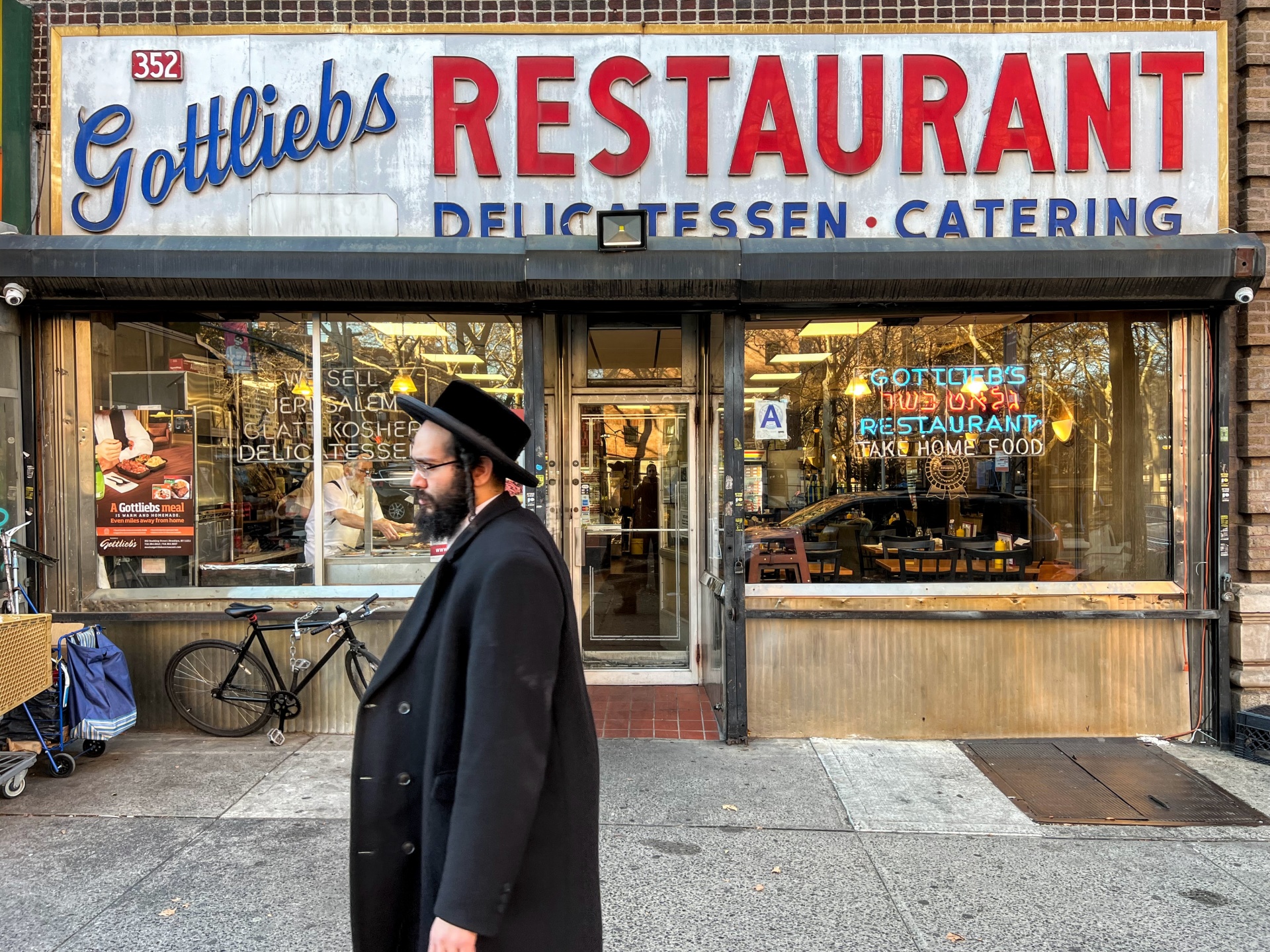
When I’m in New York City, I have a favorite routine: I grab a cappuccino at one of the chic coffee shops in Brooklyn’s Williamsburg neighborhood, then head south toward the Hasidic area. At about South 9th Street, a strikingly different world emerges; gone are the designer stores, stylish hipsters, and luxury high-rises. Instead a secluded world of ultra-Orthodox Jews appears.
The men wear hats, long beards, side curls, and black coats from which the white fringes of their prayer shawls dangle. Speaking Yiddish, they’re glued to their flip phones as they scurry around the busy streets. The women, bewigged and clad in long black skirts, navigate the streets with baby strollers and roving children. Often, I’m the only non-orthodox person on the street. All restaurants, grocery stores, and pastry shops are strictly kosher, many of them with Yiddish signs. Observing this insular world smack in the middle of New York City is a surreal experience.
I like to walk up to elderly men and ask for directions — in Hungarian. Almost without fail, they respond in fluent, though rustic Hungarian, spoken with a charming vernacular of the countryside. Few people know that Brooklyn’s ultra-orthodox Hasidic people originate from 19th century Hungary. Hasidism, a branch of Orthodox Judaism, found fertile ground among the poor Jews of northeastern Hungary who lived in rural communities. Unlike the secular, assimilated Jews of Budapest and other big cities, the Hasidim opposed integration, held to the ancient traditions, and formed large hereditary dynasties (or sects) under the strict guidance of a revered grand rebbe. After the Holocaust, when nearly all were killed, the survivors fled Hungary and rebuilt their communities from the ashes in the newly formed Israel and in the United States.

Today, more than 150,000 ultra-orthodox Jews in Brooklyn have Hungarian ancestry, with Williamsburg and Borough Park their main neighborhoods. Satmar is the biggest dynasty, named after the formerly Hungarian city of Szatmárnémeti, in today’s Romania, where the charismatic rebbe, Yoel Teitelbaum, gained a large following. Teitelbaum escaped the deportations, came to New York in 1946, and successfully revived the community. Other major Hungarian Hasidic groups in Brooklyn include the Munkatch (Munkács), Popa (Pápa), Klausenburg (Kolozsvár) dynasties, as well as smaller ones, such as those from Kaliv (Nagykálló), Kerestir (Bodrogkeresztúr), and Liska (Olaszliszka).

“Some of these places fell outside Hungary’s borders after World War I, but the Jews there thought of themselves as Hungarians,” said Yosef Rapaport, a respected community leader in Borough Park. “My mom was from Mihályfalva, my father from Halmi, both of which were by then part of Romania, but they spoke Hungarian at home. In fact, the great majority of orthodox Jews today in Brooklyn speak Yiddish with a Hungarian accent.”
There are dozens of Hasidic sects in Brooklyn, many of them Hungarian, others Polish, Russian, and Ukrainian. They may seem uniform from the outside, but there are subtle differences. “Hungarian Hasidim have a reputation for being hospitable, that there’s always something cooking in a real Hungarian family or that the coffee room is well-stocked and free in a Hungarian synagogue,” said Alexander Rapaport, son of Yosef and the owner of Masbia, a non-profit soup kitchen network. “The women are usually more put together; modest, dressed very Hasidic, but you can tell they’re Hungarian,” he said. “Marrying a Hungarian woman is almost like getting extra points.”

Borough Park has the most orthodox Jewish residents in Brooklyn. Unlike in Williamsburg, not everyone has roots in Hungary, but many of the neighborhood’s more than 300 small synagogues are named after places in Hungary — the Sopron, Debrecen, and Mád synagogues are just a few I discovered. A section of Thirteenth Avenue, the main commercial street, is called Raoul Wallenberg Way, in honor of the Budapest-based Swedish diplomat who saved the lives of thousands of Jews, many of whom later came to Brooklyn.

In Williamsburg, my first trip was to Gottlieb’s, a boisterous kosher restaurant packed with bearded men with black hats and run by Menashe Gottlieb, a reserved 44-year-old Satmar with glasses and blond side curls. Menashe’s grandfather, Zoltán, fled Hungary during the revolution of 1956 and opened the restaurant specializing in dishes he missed from home: goulash, stuffed cabbage, cabbage noodles (káposztás tészta), shlishkes (nudli), paprika potatoes (paprikás krumpli). Fast forward to 2021, little has changed at Gottlieb’s. The original neon signs still adorn the storefront and the steam tables are still loaded with Hungarian food.

As the older generation dies out, Hungarian is slowly disappearing from the streets of Brooklyn. "In Borough Park, the kiosks used to sell Hungarian newspapers," told me Professor Nathaniel Deutsch, the author of “A Fortress in Brooklyn,” a riveting book about the history of the Satmar group. The children and especially grandchildren of Hungarian-Jewish Satmar immigrants, like Menashe, speak no Hungarian. “My generation only knows a few words,” he said.
As customers trickled in during the mid-afternoon service, Menashe hollered over to them in Yiddish, asking about their Hungarian skills. “When I was a child, my parents would switch to Hungarian when they didn’t want me to understand what they were talking about,” said a young Hasidic man in English. Hungarian used as a secret, adult’s language is something I later heard from others too.

But this third generation isn’t entirely disconnected from the language. They know several folk songs, most famously “Szól a kakas már,” a hauntingly beautiful melody which seeped into Hasidic culture in the 19th century. “This is more than just a folk song, it’s the national anthem of Hungarian Hasidic Jews. It’s a song of yearning for Jerusalem, a song with a lot of emotional power,” Yosef told me. The song’s origins go back to Yitzchak Isaac Taub, the rebbe of Nagykálló, a small city in eastern Hungary, who adjusted the song with Hebrew lines about the return to the Promised Land. It became such a hit that today almost every Hasidic child in America learns it.

“Come back on Sunday, the food is freshest and most dishes are available the day after Sabbath,” a loquacious customer tipped me off on my way out of Gottlieb’s. So that’s what I did. A crowd had gathered by the early evening, consisting of various Hasidic sects (I could tell by the different outfits), regular orthodox, and even secular Jews. “Some of these people come from far away because they miss the foods their Hungarian grandmother used to cook for them,” said Menashe. When a loud orthodox man in his 60s, David Rabinowicz, heard I was visiting from Budapest, he recited his whole family tree, going back to the Grand Rebbe of Sátoraljaújhely in eastern Hungary. Then he tasked me with finding him a “nice Jewish-Hungarian wife.” The old cliche that food brings people together is very much true at Gottlieb’s.
I ordered stuffed cabbage, made with beef here and served without sour cream to keep it kosher (the mixing of meat and dairy isn’t allowed under Jewish dietary laws). It was sweeter than what I’m used to but very tasty. Hungarian food in Brooklyn isn’t confined to Gottlieb’s. Túrós batyu, for example, a sweetened cottage cheese stuffed pastry, seems to be as popular here as back in Budapest (locals refer to it as "delkli").
But the tastiest lecsó, paprikash, layered potatoes, fasírt, aranygaluska, and palacsinta, aren’t made for the public. “Hungarian women pride themselves on preparing a five-course feast every night so the Hungarian Hasidim rarely eat out,” said Alexander when I asked about other Hungarian places. And when they do, they prefer to eat something else, kosher Chinese or Japanese food for example.
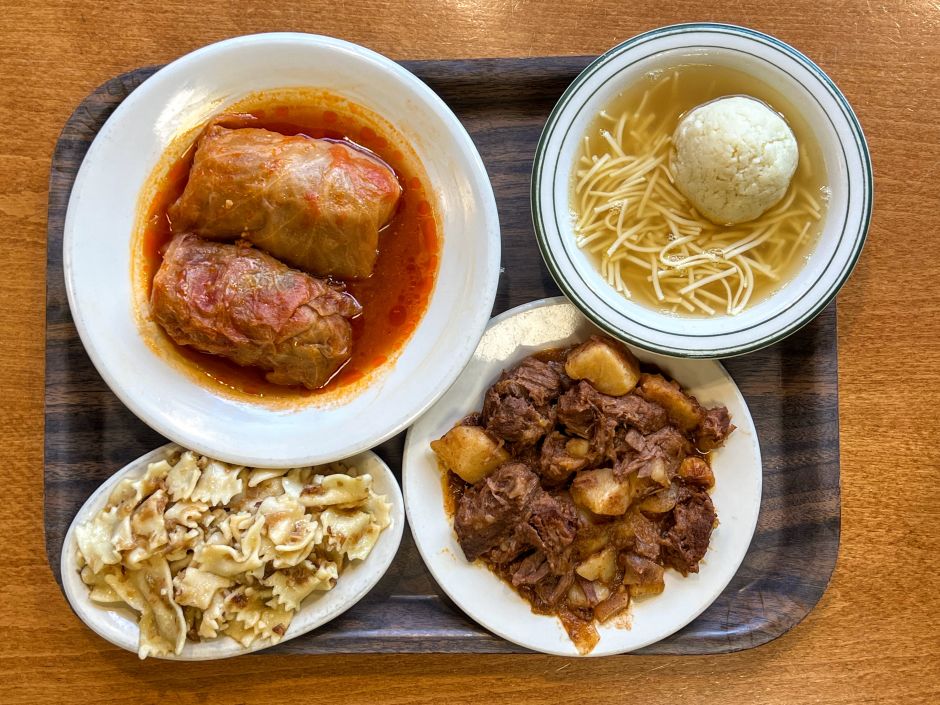
Hungary’s cultural influence extends beyond food and language. “Many of the Hasidic religious practices today are rooted in Hungary and even the expression orthodox comes from there,” Yosef explained. The reform (neolog) faction of Hungary’s Jews in the 19th century taunted the traditionalists as “orthodox” and the name stuck. At the same time, many Hasidic Jews migrated to Hungary from Galicia, an area straddling today's Ukraine and Poland, in search for a better life. In Hungary, they were inspired by the existing ultra-orthodox traditions. "They rejected every attempt at reforms and were more sectarian than other streams of Judaism,” Yosef said. Today, the most demanding rules hark back to the Hasidim of Hungary.

Hasidism governs every waking moment, especially for members of the Satmar sect, which is the strictest. Life, they believe, is to be dedicated to the study of Torah and to the performing of good deeds (mitzvahs), especially to “be fruitful and multiply.” They view the outside world as morally corrupt, replete with harmful distractions, especially those from the opposite sex.
Boys and girls are segregated from each other from an early age. Dress codes are designed so as to induce no sexual temptations. Women shave their heads after marriage and wear headscarves or wigs. There’s a ban on owning a TV and most homes have no internet. Smartphones are allowed only after a special software has been installed which filters unwanted content. To ensure that rules are observed, modesty committees prowl some neighborhoods. They discipline women who dress too conspicuously or don't properly shave their heads, and smartphone owners who haven’t obtained a filtering certificate.
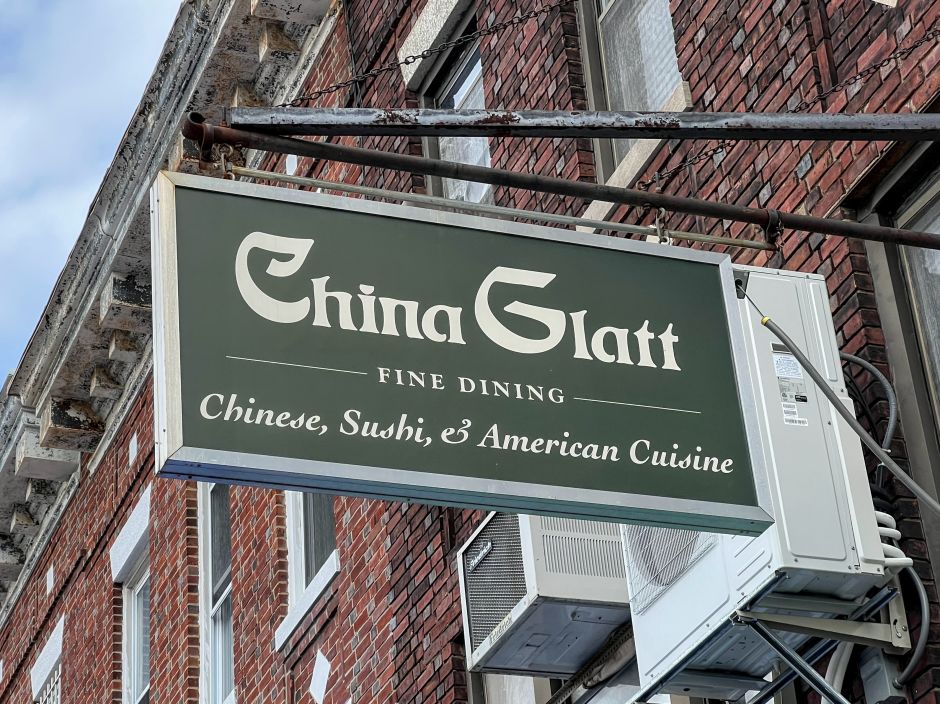
From an early age, boys attend special religious schools called yeshiva where they spend their days analyzing the Talmud, the collection of Jewish holy laws. Secular education is not a priority — there is no teaching of history and very little of math — so most people have little conception of what’s going on outside their narrow confines. The classes are held in Yiddish, the traditional language of Eastern European Jews, which is also the language of the home. As a result, many Hasidic men talk in an accented, broken English despite having lived their entire lives in the United States. For girls, who’re trained to be homemakers not Torah experts, the curriculum is more secular and they tend to be more worldly. “When I started working at the restaurant in my twenties and needed to write invoices and respond to emails, my wife had to teach me basic English grammar, like how to spell one, two, three,” Menashe told me.
After completing the yeshiva, around age 18, men usually get married. The selection of spouses happens through the matchmaking of the parents. Initially, the women find work to support their husbands, who are enrolled at a kollel, an adult school for advanced Torah studies, but once the first or second of many children is born, they become full-time homemakers and child bearers. Hasidic women have an average of 6-8 children, which explains how the sects were able to spring back to life after the Holocaust decimated their numbers. Menashe, for example, at 44, has nine children and three grandchildren. Today, ultra-orthodox Jews account for more than half of New York City’s Jewish children.

At least once a year, the Hasidim visit their grand rebbe. “Think of him as the Pope for the Catholics,” Menashe once said. Some go for advice with important life decisions, others for a blessing before Yom Kippur, the main Jewish holiday, or before the birth of a child. With mundane or technical questions — for example what to do when a knife had come in contact with milk while cooking meat — people usually call the local Talmudic scholar for advice. The Satmars have two Grand Rebbes currently, Aaron and Zalman Teitelbaum, following a succession feud between the two brothers after the 2006 death of their father.

Since Hasidic men have no secular education, they need to find employment within the community. But it’s a mistake to think they spend all day in the synagogue praying and don’t have regular jobs. “From the beginning, their leader, Yoel Teitelbaum, was very emphatic that his followers had to work,” said Professor Deutsch. Some men become assistants in religious apparel stores, kosher inspectors, and yeshiva teachers, but the major employer is the real estate industry, where thousands work as developers, mortgage brokers, inspectors, electricians, truck drivers, and plumbers.

Also important is B&H Photo. Founded in 1973 by the Hungarian-born Herman Schreiber, B&H is a giant consumer electronics store in Manhattan with 1,500 employees, many of them Hasidic men. Despite being a for-profit business, B&H is closed for Sabbath, even the online sales are deactivated during Saturdays. Manhattan’s Diamond District on West 47th Street, once also a hub for the Hasidim, has been on the decline for many decades.

For those who commute to Manhattan, there are daily bus services from Brooklyn so that men don’t need to take the subway where they may be exposed to “provocatively” dressed women.
On a Friday, I joined Menashe for Sabbath service. We met at Biksad, a synagogue on the corner of Bedford and Williamsburg Street whose name harks back to Bikszád, once a Hungarian village near Satmar. The bare synagogue was packed with side-curled Hasidic men of all ages, who were passionately swaying back and forth with prayer books in hand and occasionally erupting in joyful singing. All of them dressed in black, the married men wore impressively elaborate, round fur hats (shtreimel). With my clean-shaven face, borrowed yarmulke, and regular clothes, I looked like a visitor from another planet. People eyed me with understandable suspicion until Menashe arrived and told them I was a friend visiting from Hungary.
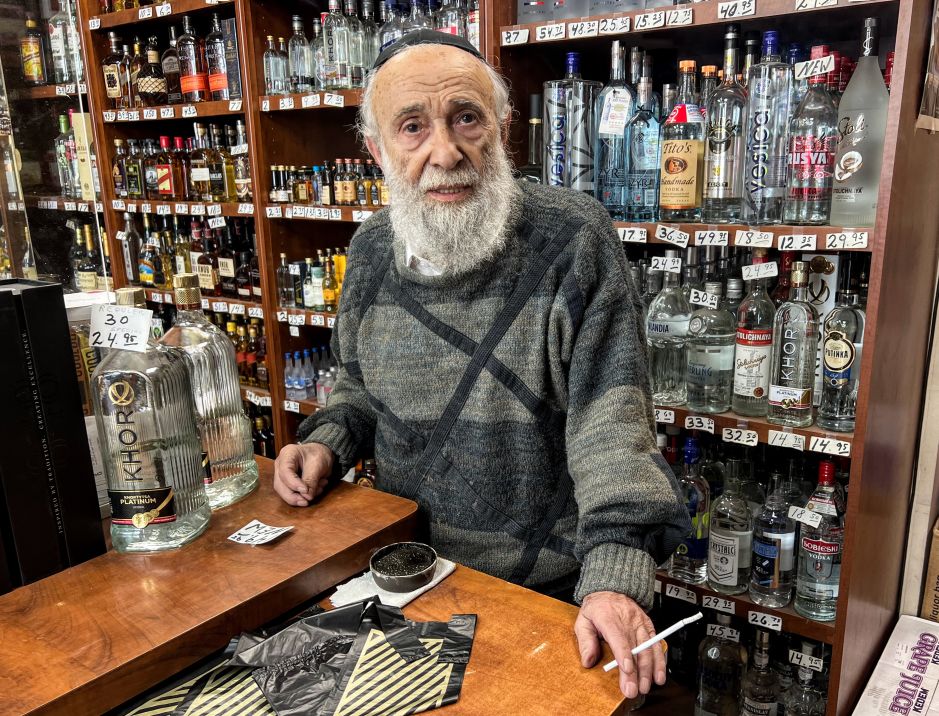
By the end of the service, a group gathered and quizzed me about my favorite kosher restaurants in Budapest. Almost all of them had been to Hungary because Hasidic Jews regularly travel back to the villages of Eastern Europe where their dynasties originated to visit the holy graves of their founding rebbe. “Even a small village might have had a famous yeshiva or a rabbi who wrote scholarly works. The name of the town is much more important to us than anyone in Hungary would think. It’s an alternative universe,” said Yosef with a smile.
For example, every year, tens of thousands of Hasidic men descend on the small village of Bodrogkeresztúr, in the heart of the Tokaj wine region, to pay their respects and leave wish lists at the tomb of the legendary Yeshaya Steiner. A couple of years ago, I happened to be driving through and it was a truly memorable sight. “He was a Wonder Rabbi and a holy man,” said Yosef. “He cared for the sick and fed the poor, it didn’t matter if you were Jewish or not. Even gentiles came to him for his blessing.” When I wondered why Hasidic people would go to the holy site of a rebbe from another dynasty, he said that Yeshaya Steiner superseded all sects.
Yosef’s nephew, Dov Weber, a genealogical researcher, goes through gigabytes of historical documents every year to collect detailed information about Jewish cemeteries across Greater Hungary. He works with a non-profit called Heritage Foundation for Preservation of Jewish Cemeteries to help them create databases and restore the graves and clean the headstones of the thousands of abandoned Jewish burial grounds in Eastern Europe, mainly Hungary.

After the Friday service, Menashe goes home to celebrate the first of three Sabbath meals with his family. They sing, drink wine, and feast on classic Eastern European Jewish foods like challah bread and gefilte fish and matzo ball soup and apple compote, and also eggplant and hummus dips that were adopted from Middle Eastern Sephardic Jews. Saturdays begin at a mikveh, a purifying ritual bath, followed by two-and-half-a-hours of prayer at the synagogue. He gets home around noon, in time for a long lunch, which consists of cooked salmon or cod, mashed eggs with chopped liver, and cholent. Cholent, the signature Sabbath dish with a million variations, is a casserole cooked on low heat overnight and made usually from beans, barley, eggs, and beef and served with a side of kugel, which is a sweet noodle or potato pudding.
After the meal, Menashe takes a catnap (the Sabbath ends at sunset, which means the day is longer in the summer, as is his nap), then returns to the synagogue for a prayer and a small meal. The Havdalah ritual marks the end of Sabbath: The family lights a braided candle while singing and dancing. Once Menashe blows out the candle, the new week begins.

Most people are familiar with the platitudes about Sabbath restrictions, for example that observant Jews aren’t permitted to switch on the lights on the day of rest because it’s considered work. This is true, and many people, like Menashe, have a timer installed in their apartment. But for the Hasidim, Sabbath prohibitions can get more nuanced and even cause tensions within the community. For example, in Borough Park, there’s an area enclosed by an overhead wire (eruv), within which it’s okay to do things like pushing baby strollers and carrying prayer books during Sabbath. While this makes life easier, especially for mothers with many children, staunch traditionalists like the Satmars think this is a clear violation of the sanctity of the Sabbath.
Another issue that divides the Hasidic community is Israel. The Satmars and most other Hungarian Hasidic dynasties strongly oppose the secular state of Israel and prefer to remain in “Jewish exile” in the United States until the arrival of the Messiah. Others, like the influential Chabad-Lubavitch sect, which is known for its outreach to secular Jews, believes that the Messiah had already come and takes a more friendly stand toward Zionism.
Several recent Netflix shows, most notably “Unorthodox,” have exposed the inner workings and unsavory aspects of the ultra-orthodoxy. The miniseries depict repressed women subject to humiliating treatment. They sit in the back of the bus, shave their heads, dress in archaic ways, and spend their time producing and raising children.
The Hasidim are also criticized for their political influence. Since members of the community follow the rebbe’s directive during elections and vote as a bloc, the sects wield disproportionate political power. New York senators, governors, and municipal leaders are known to go out of their way to win the favor of the grand rebbes and capture the tens of thousands of votes they control. In exchange, they receive public money and obtain concessions like having their own court system (beth din), police patrol service (shomrim), emergency medical unit (hatzolah), and independently run yeshivas, which openly ignore the law to teach secular subjects.
I don’t need to go further than my own secular Jewish friends to find people who’re embarrassed by this. But during the month I spent immersed in Brooklyn’s ultra-orthodox communities, I wasn’t there to condemn. I tried to view the Hasidim through their own culture and history. Heshel, the boy who sang the Hungarian folk song for me, said he appreciated that I didn’t think he was strange or acted nervous like outsiders often do.
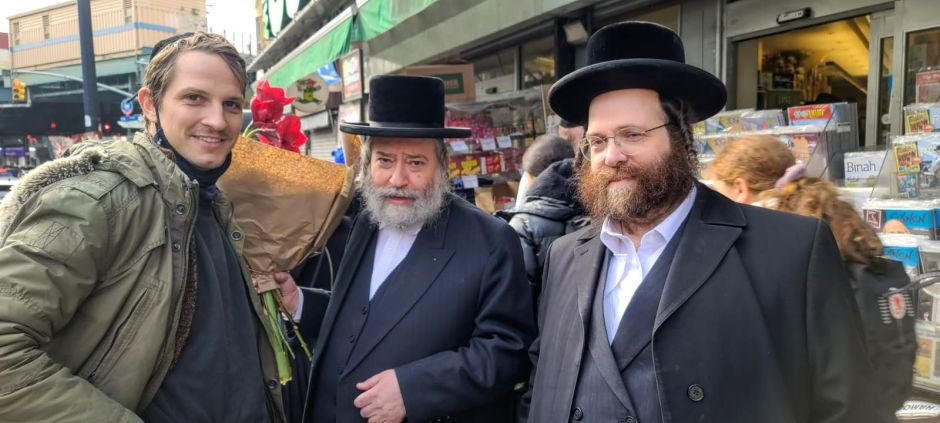
If anything, I’d become emotional when they spoke Hungarian to me or when I saw them eat Hungarian food and proudly refer to themselves as “Hungarian Hasidim.” Was it just my patriotism at work, seeing my culture live on on the other side of the world? Perhaps, but I’ve also felt a sense of loss, not so much for these uprooted people who’ve successfully rebuilt their homes in America but for contemporary Hungary. Especially the countryside, where orthodox and ultra-orthodox Jews were often the backbone of the local community and the economy before the Holocaust.
I’d think of Tokaj, which still hasn’t been able to recover from the loss of its Jewish wine merchants, who exported the famous aszú wines as far as England and the United States. And of all the other sad villages across the Hungarian countryside, where the Jewish population once reached double digits, but today feel like ghost towns, devoid of life and mired in poverty. The sobering state of current day rural Hungary is its own, well-earned tragedy.
If you’re interested in Hasidism, let me recommend three excellent books on the subject: The Pious Ones by Joseph Berger, Defenders of the Faith by Samuel Heilman, and A Fortress in Brooklyn: Race, Real Estate, and the Making of Hasidic Williamsburg by Nathaniel Deutsch and Michael Casper.